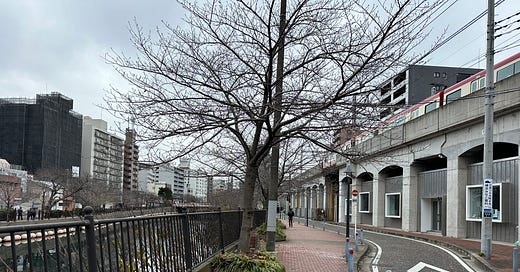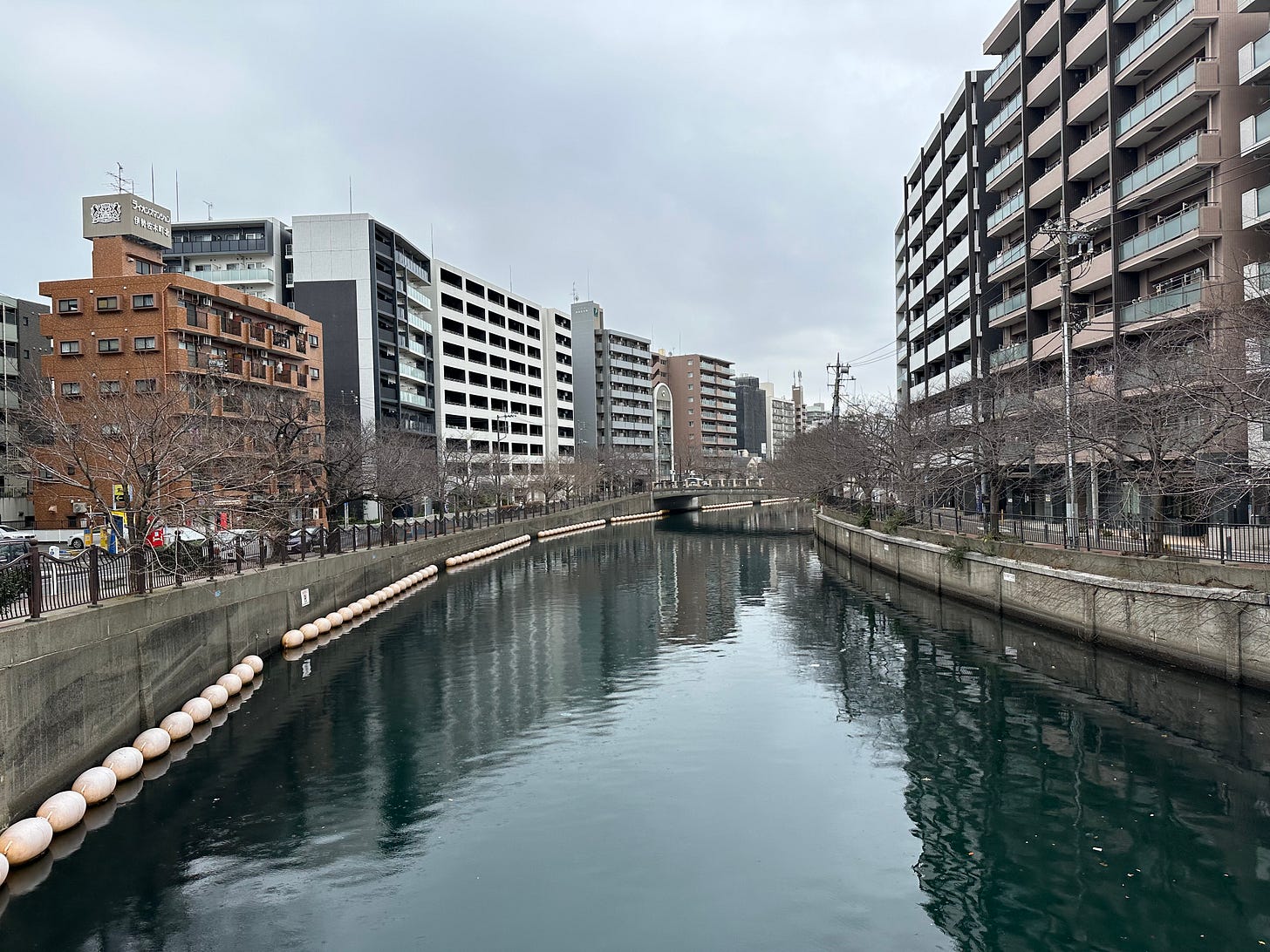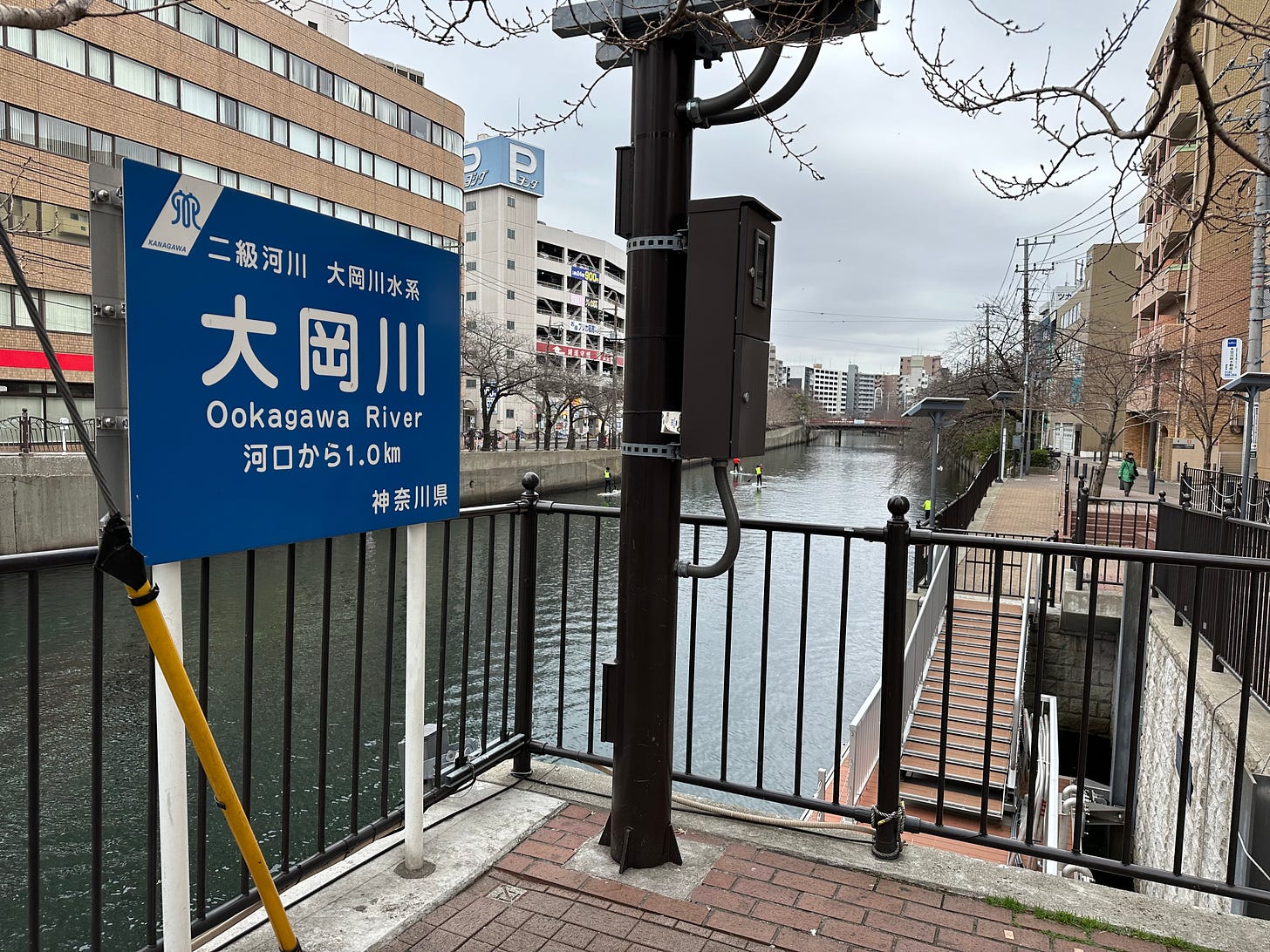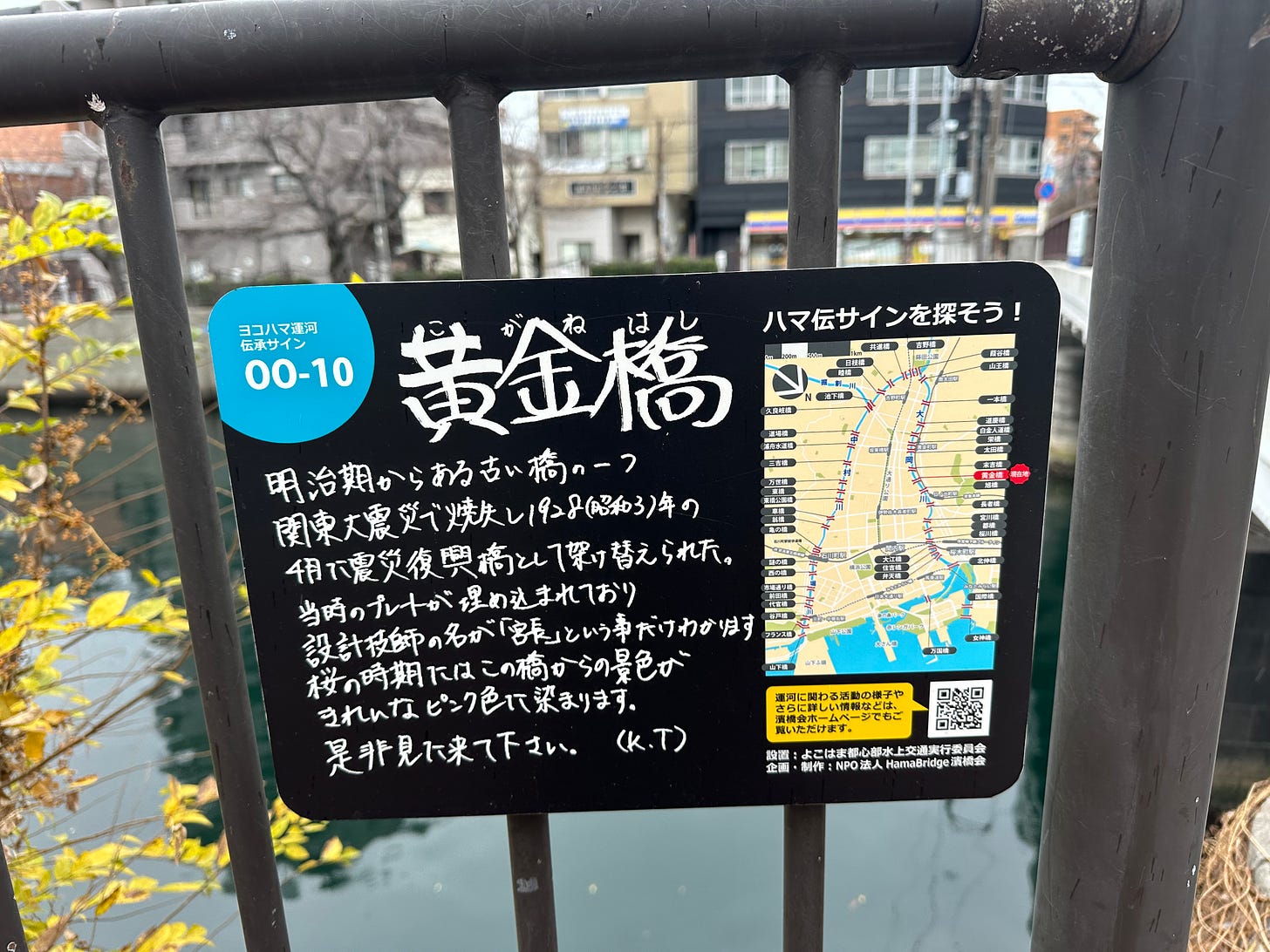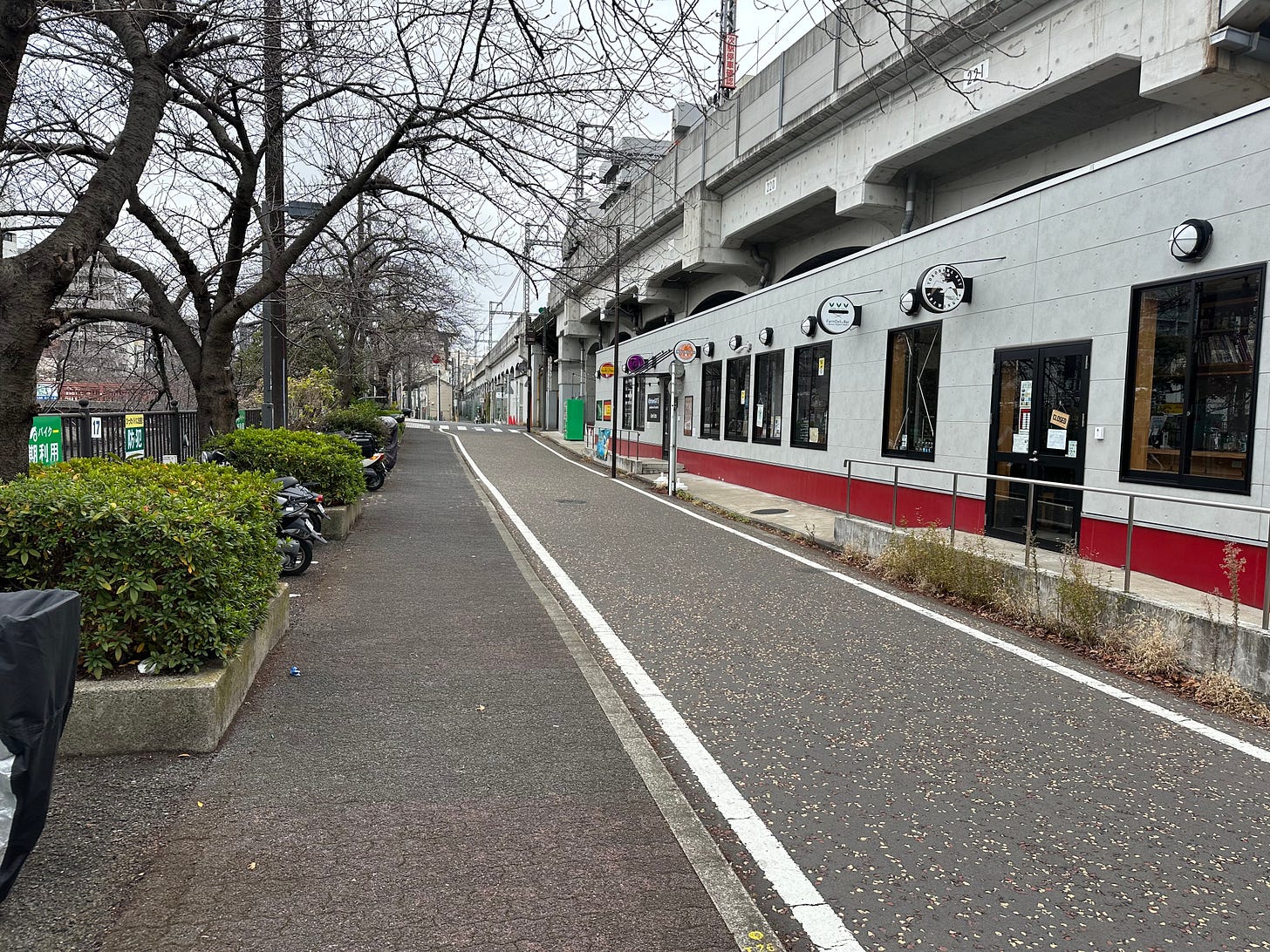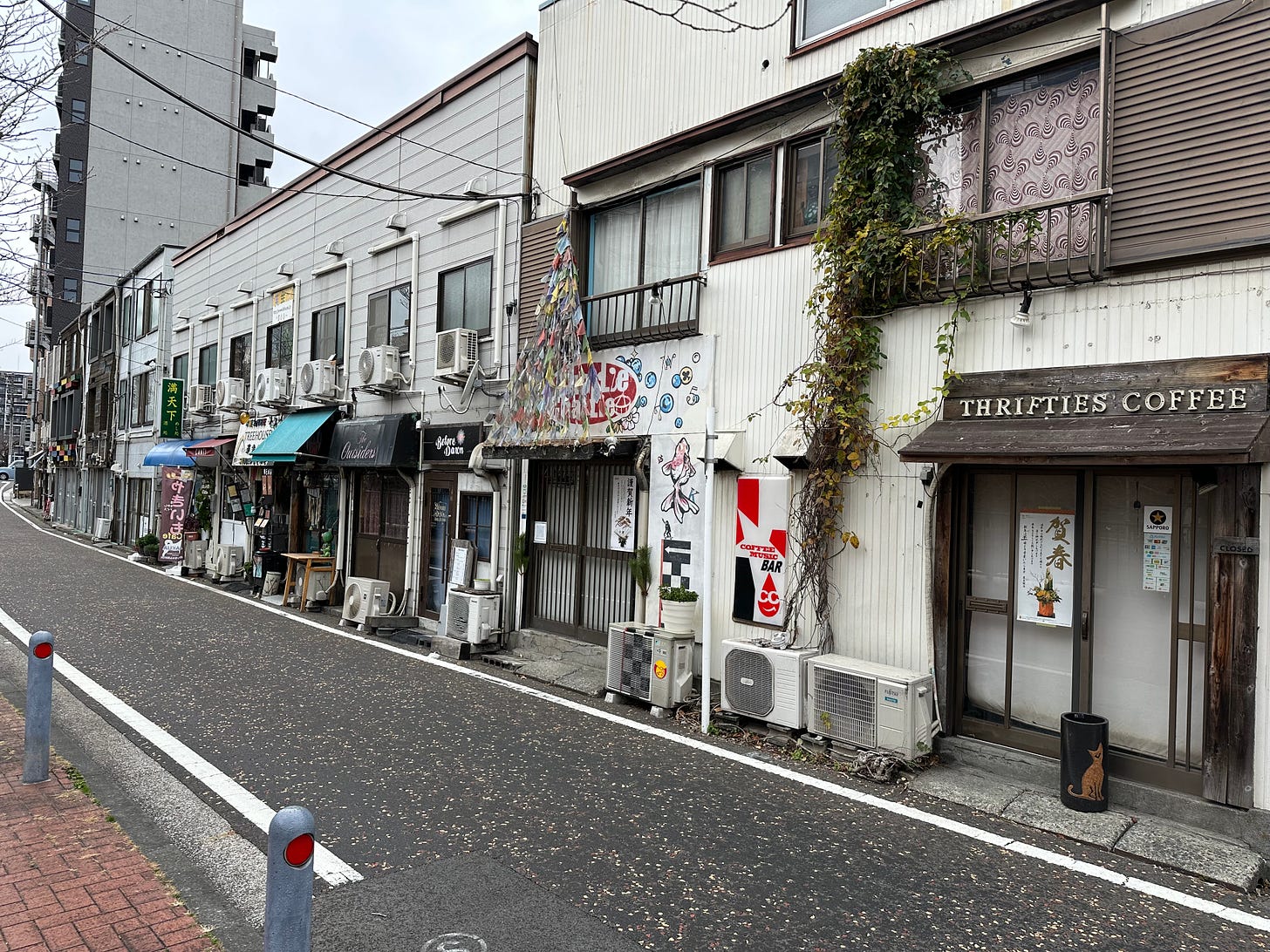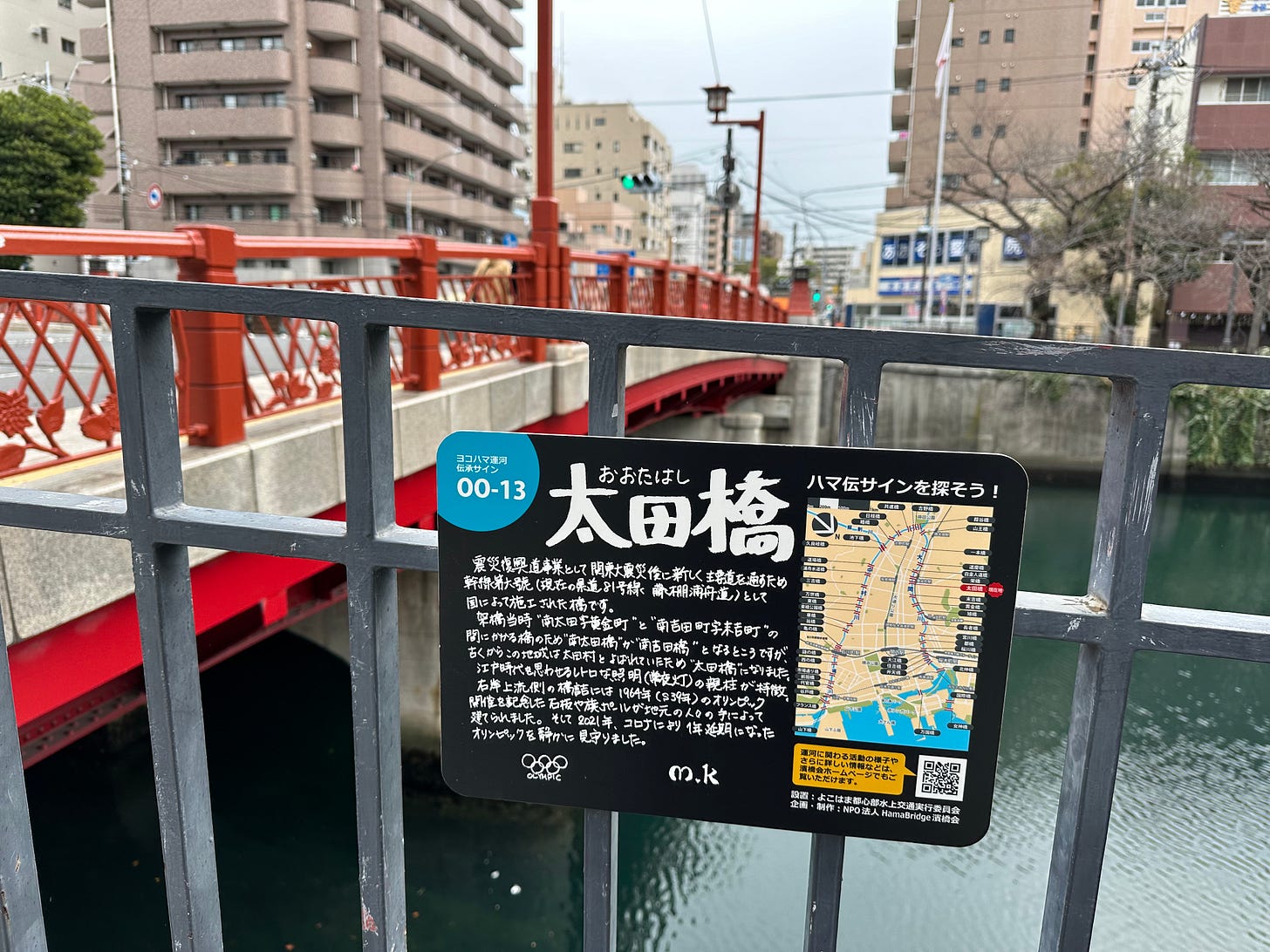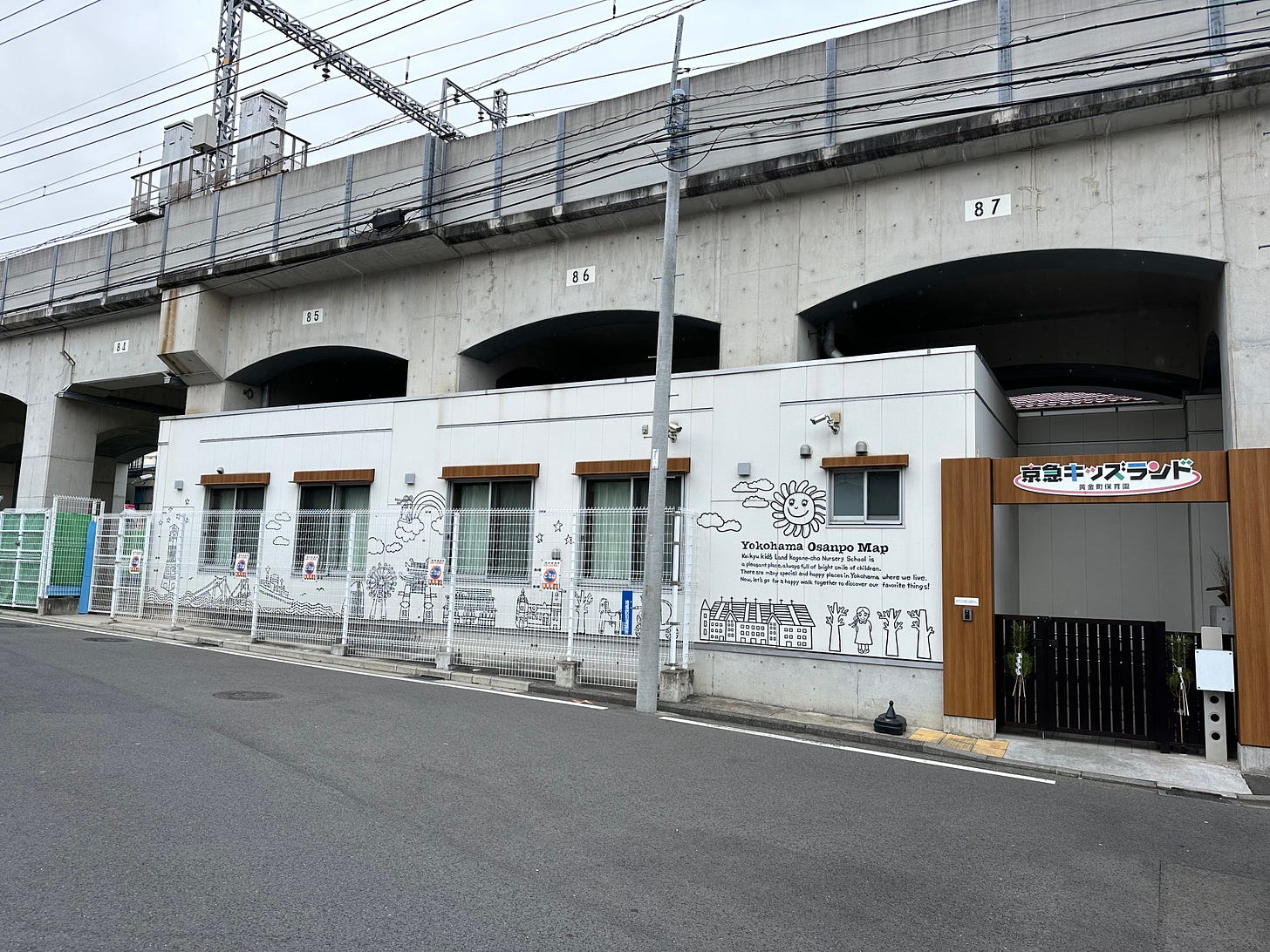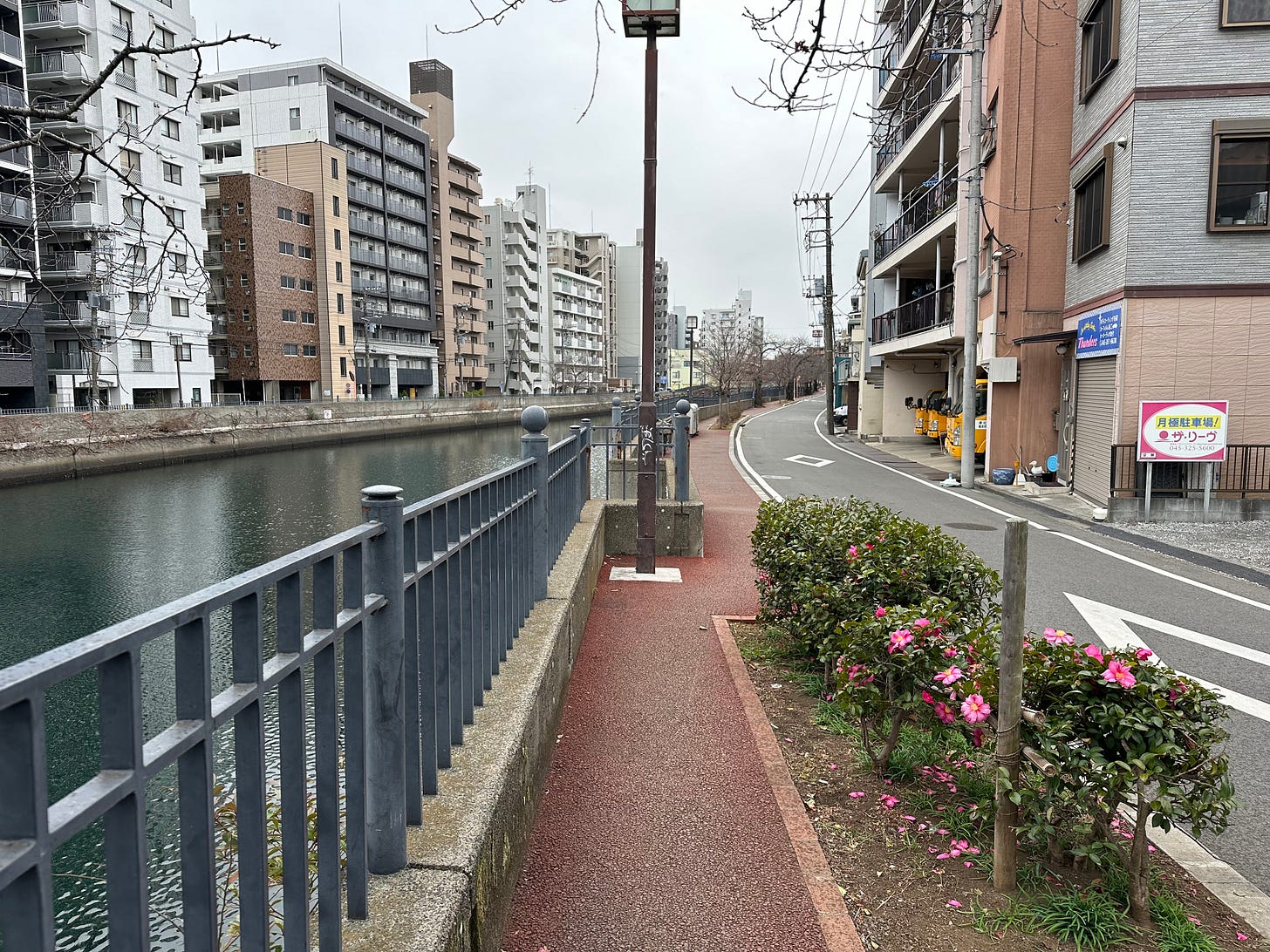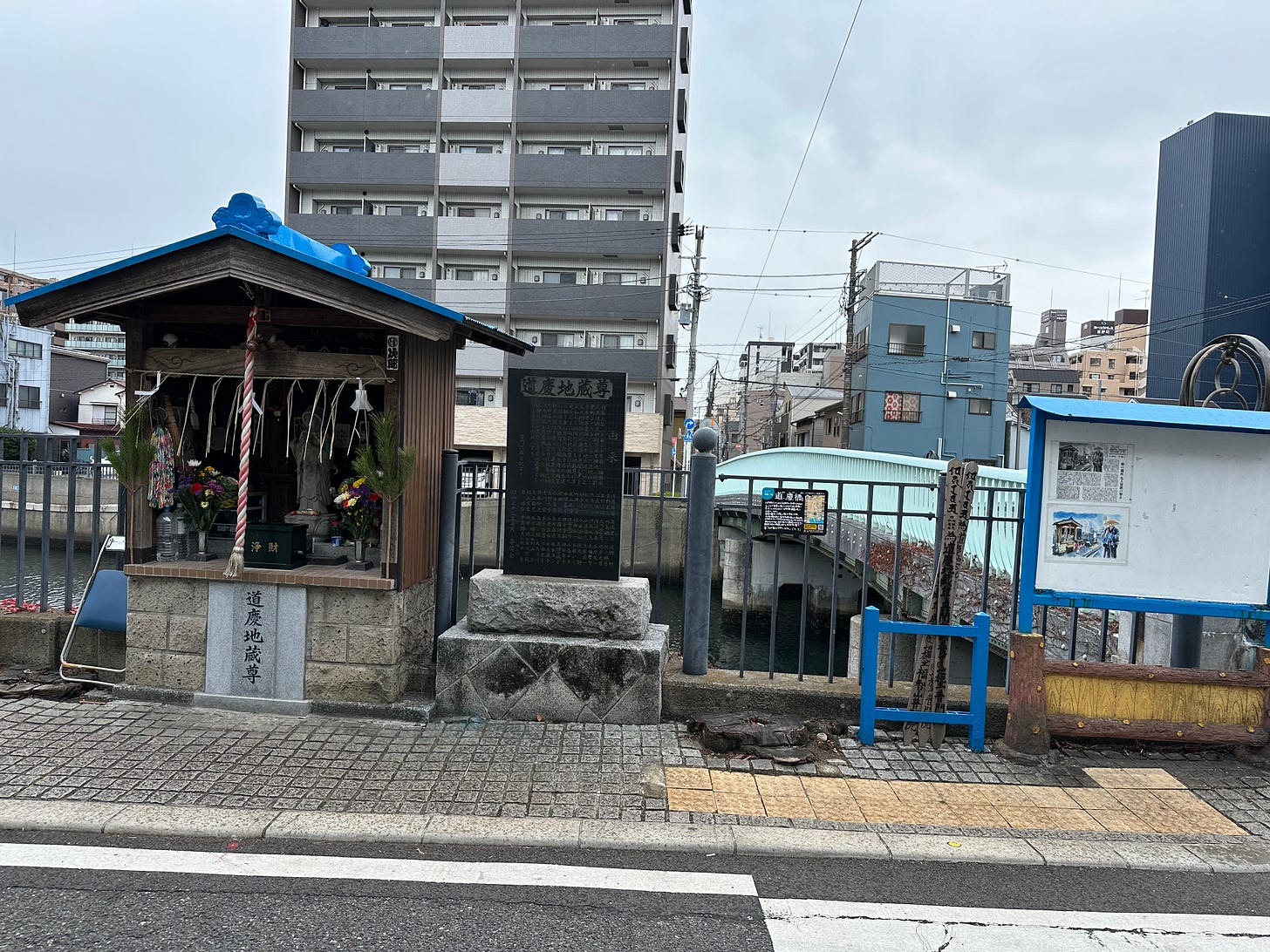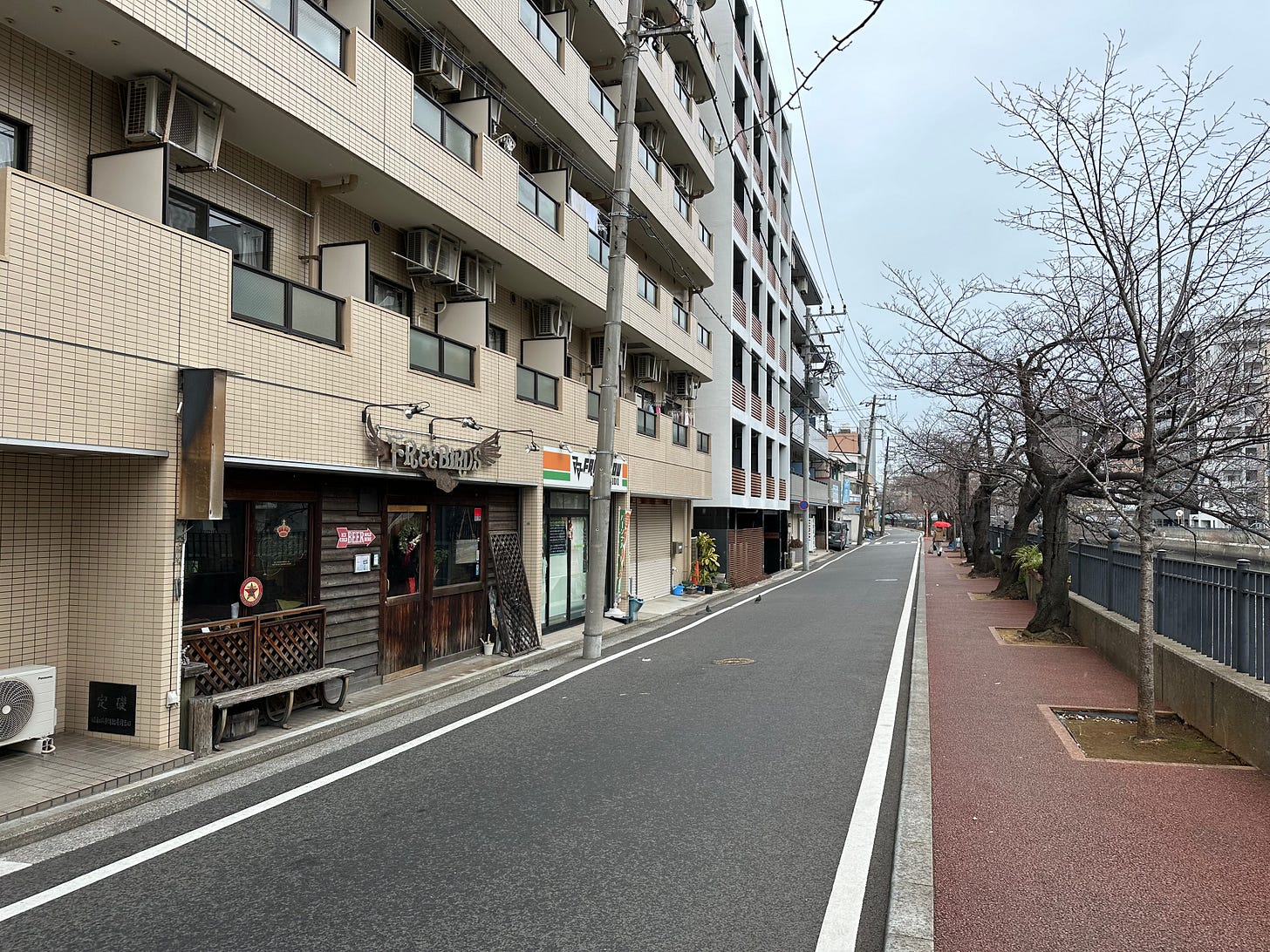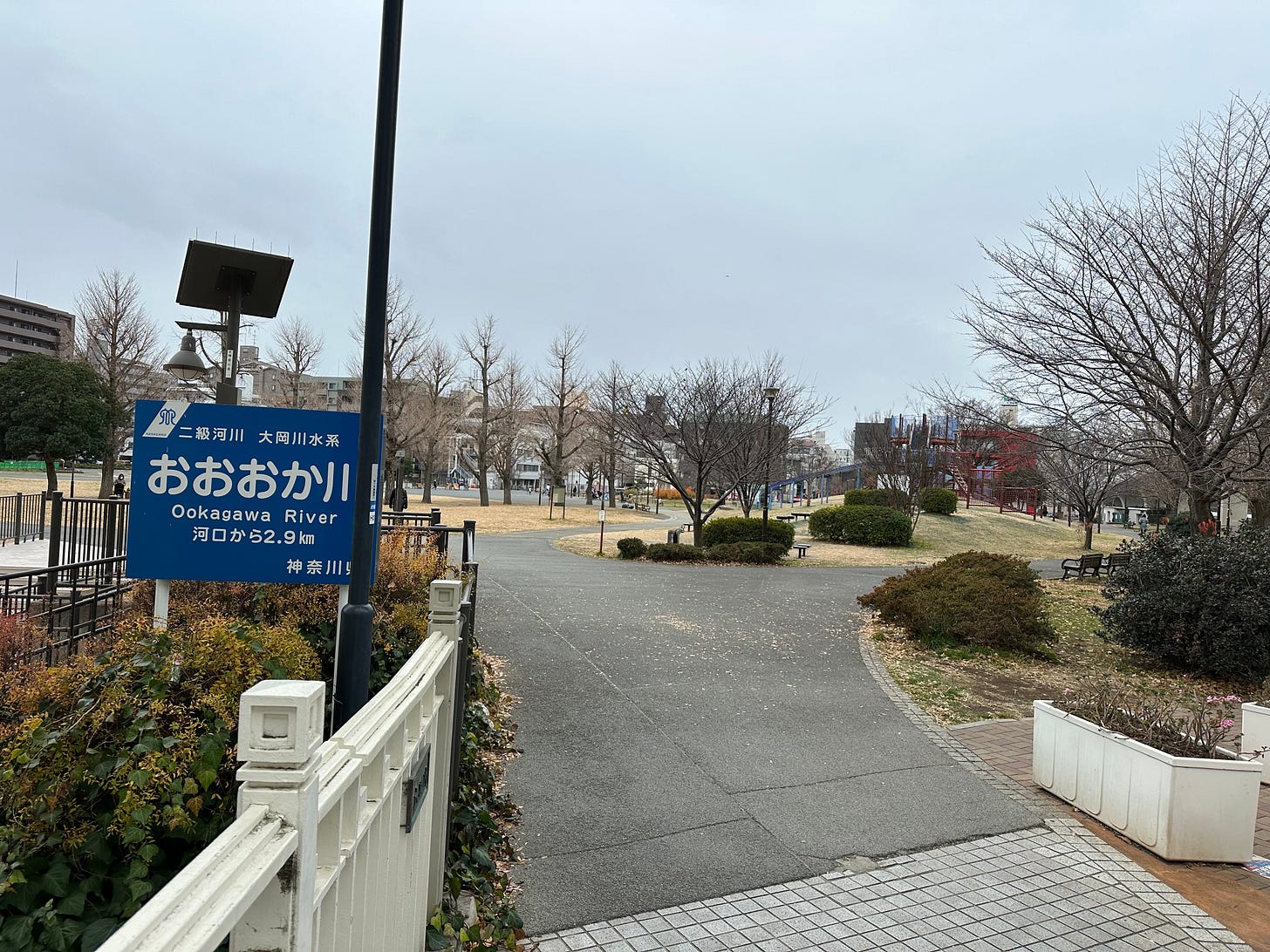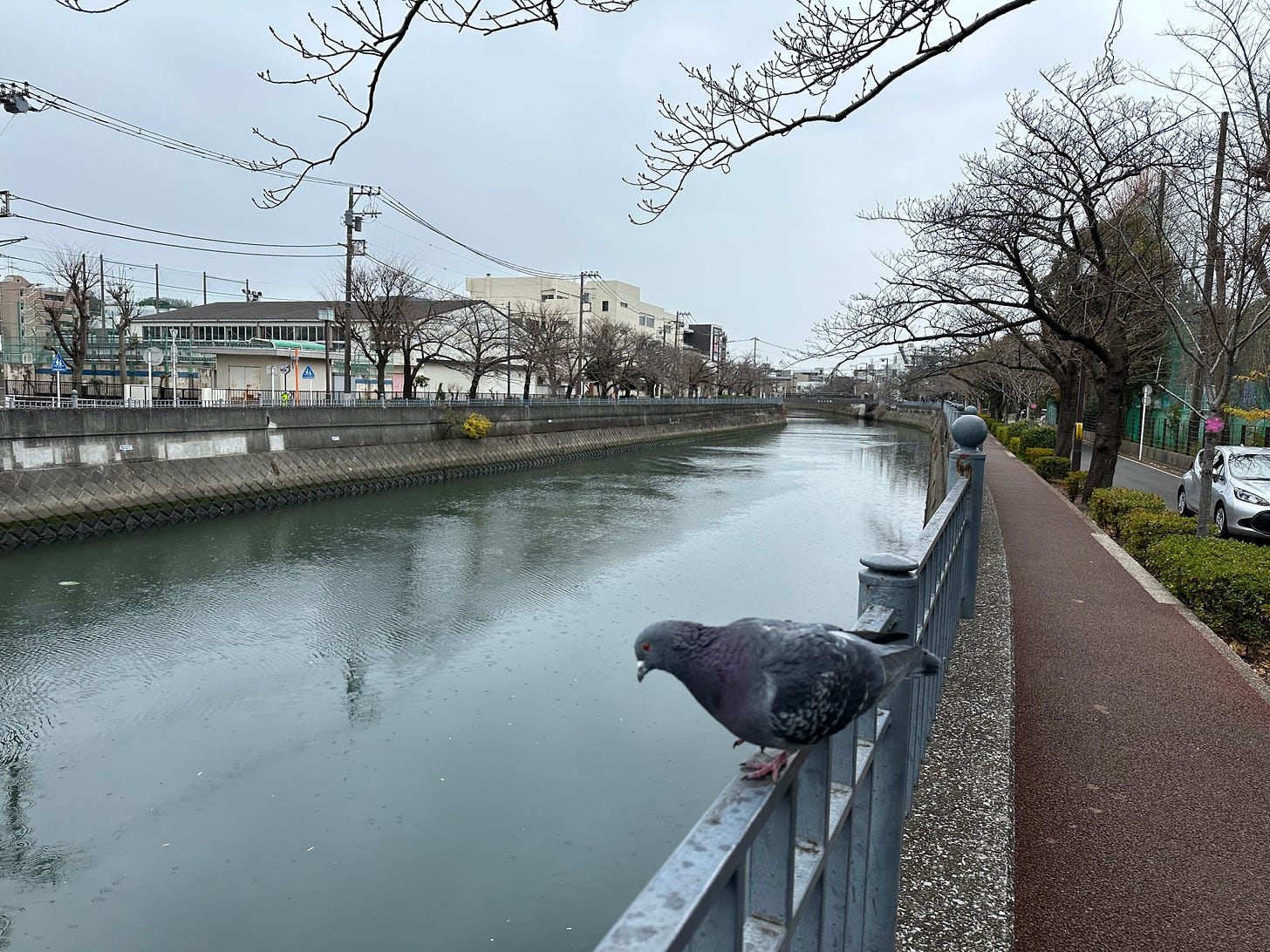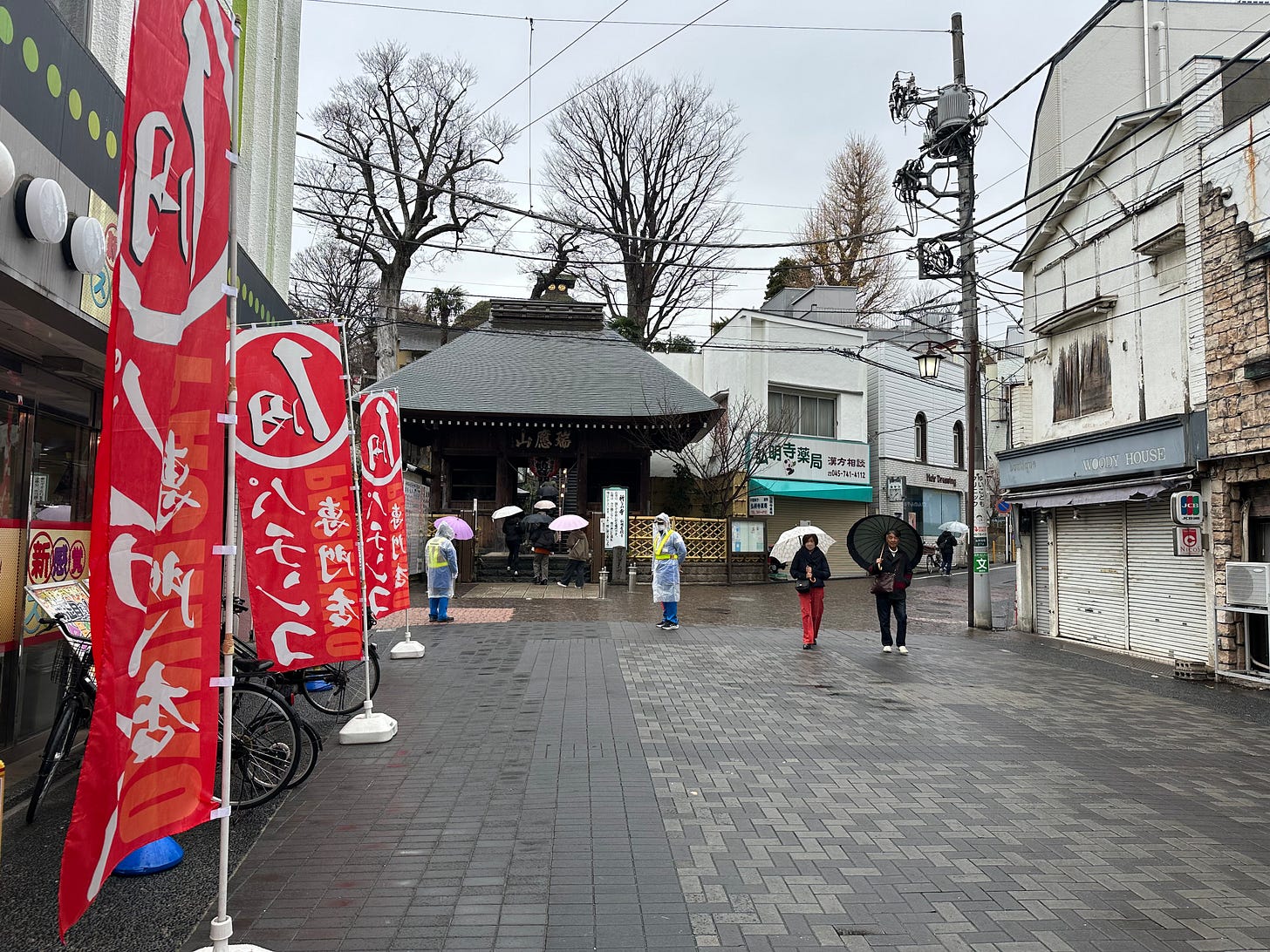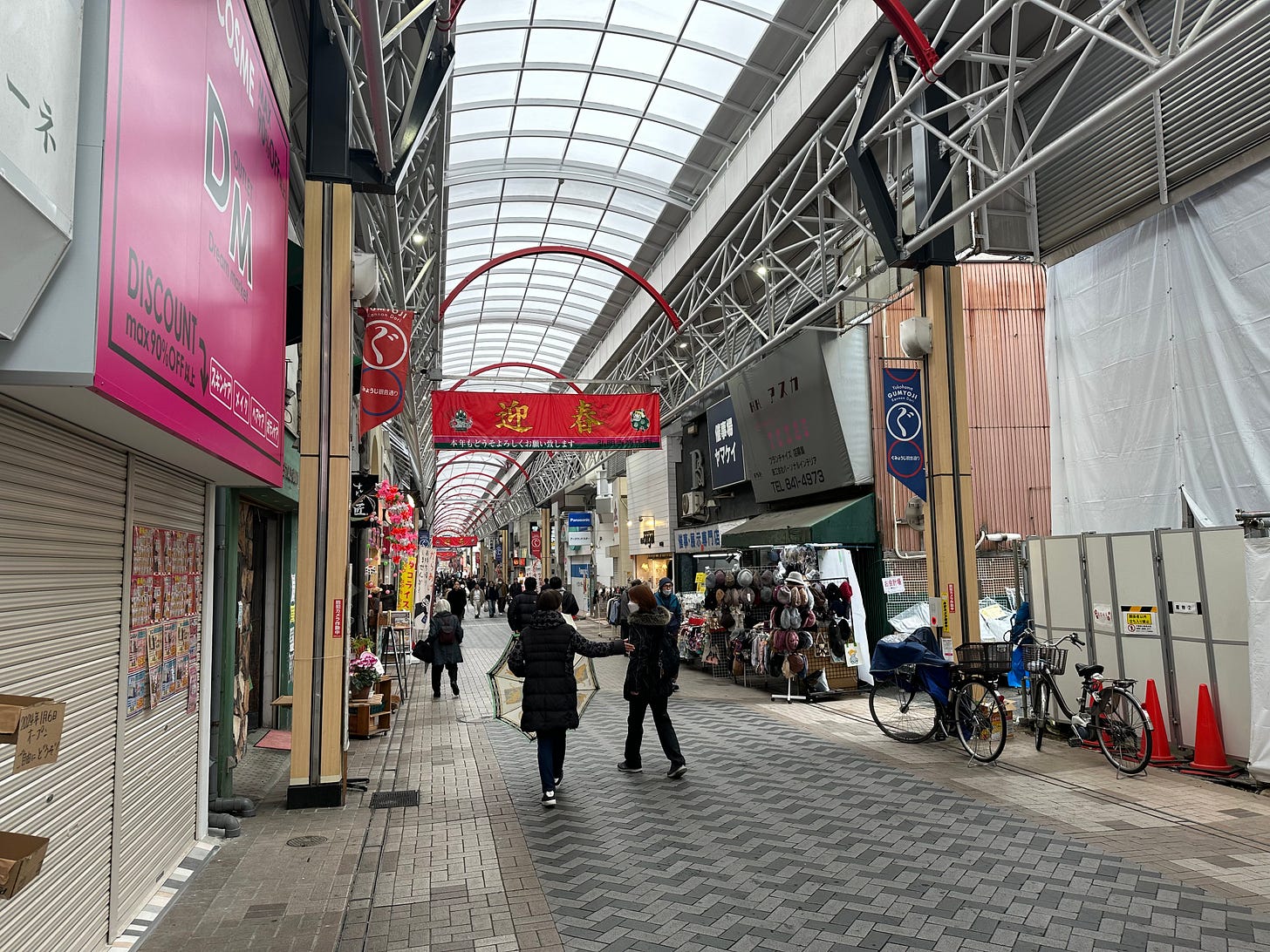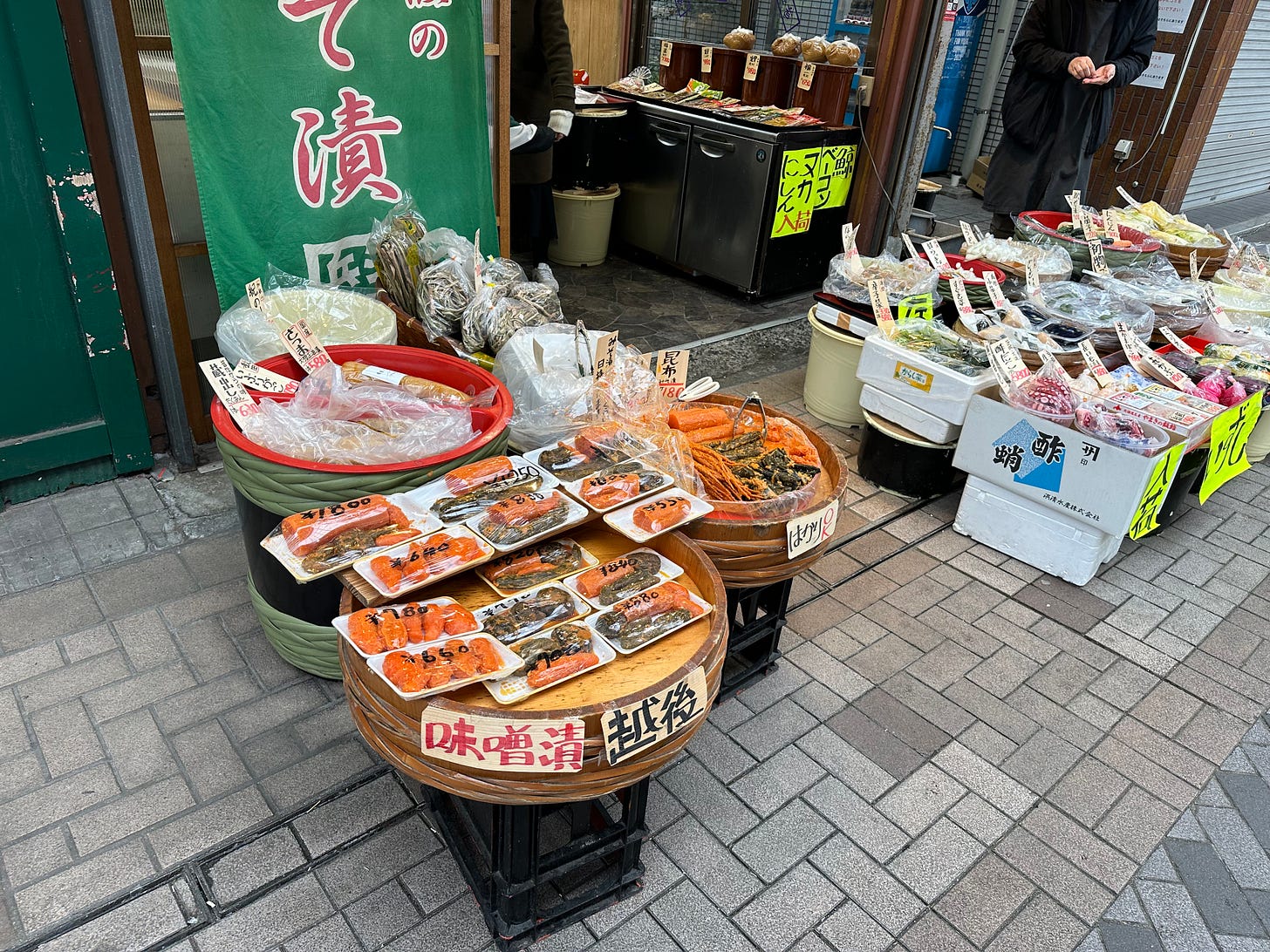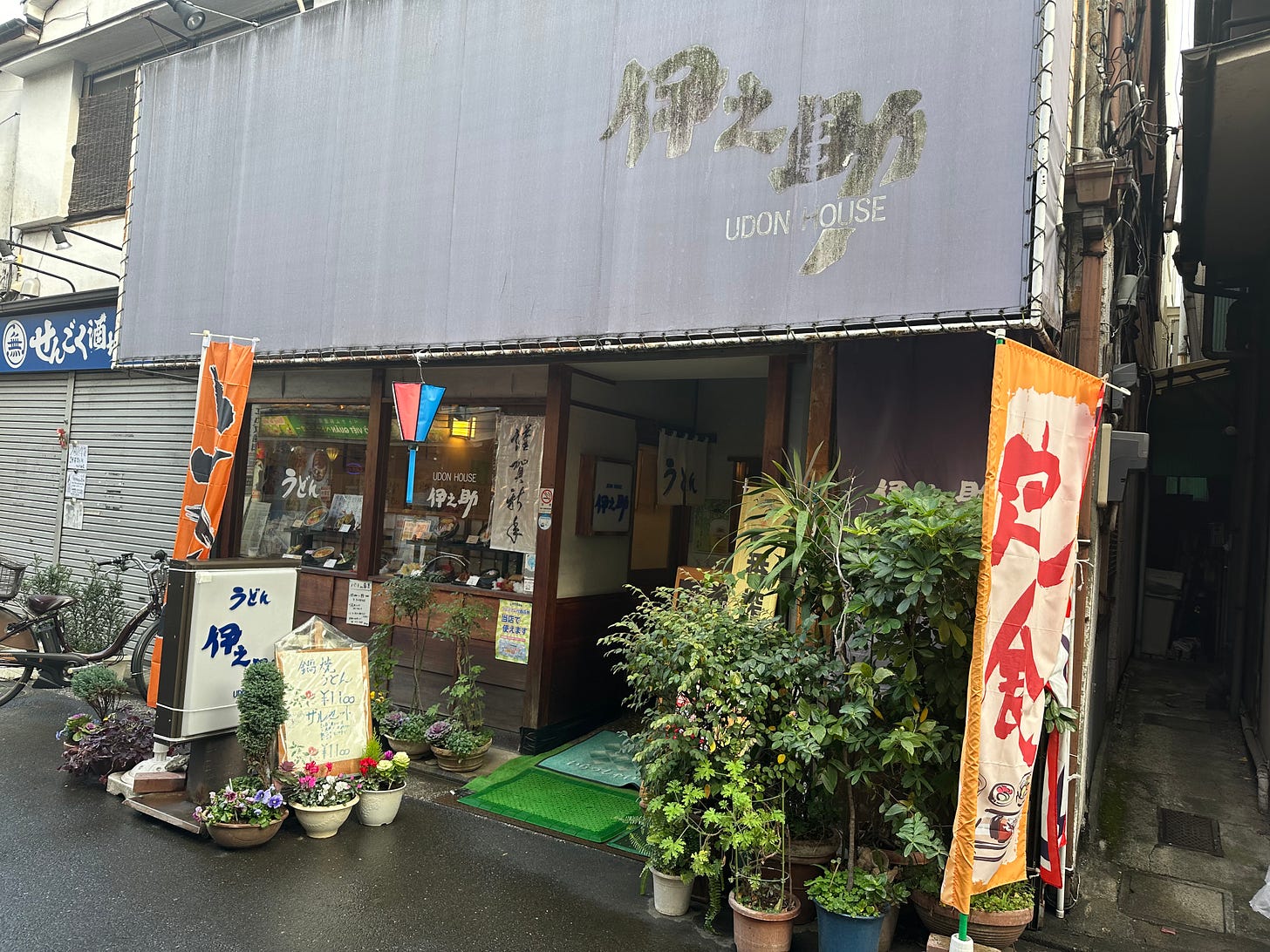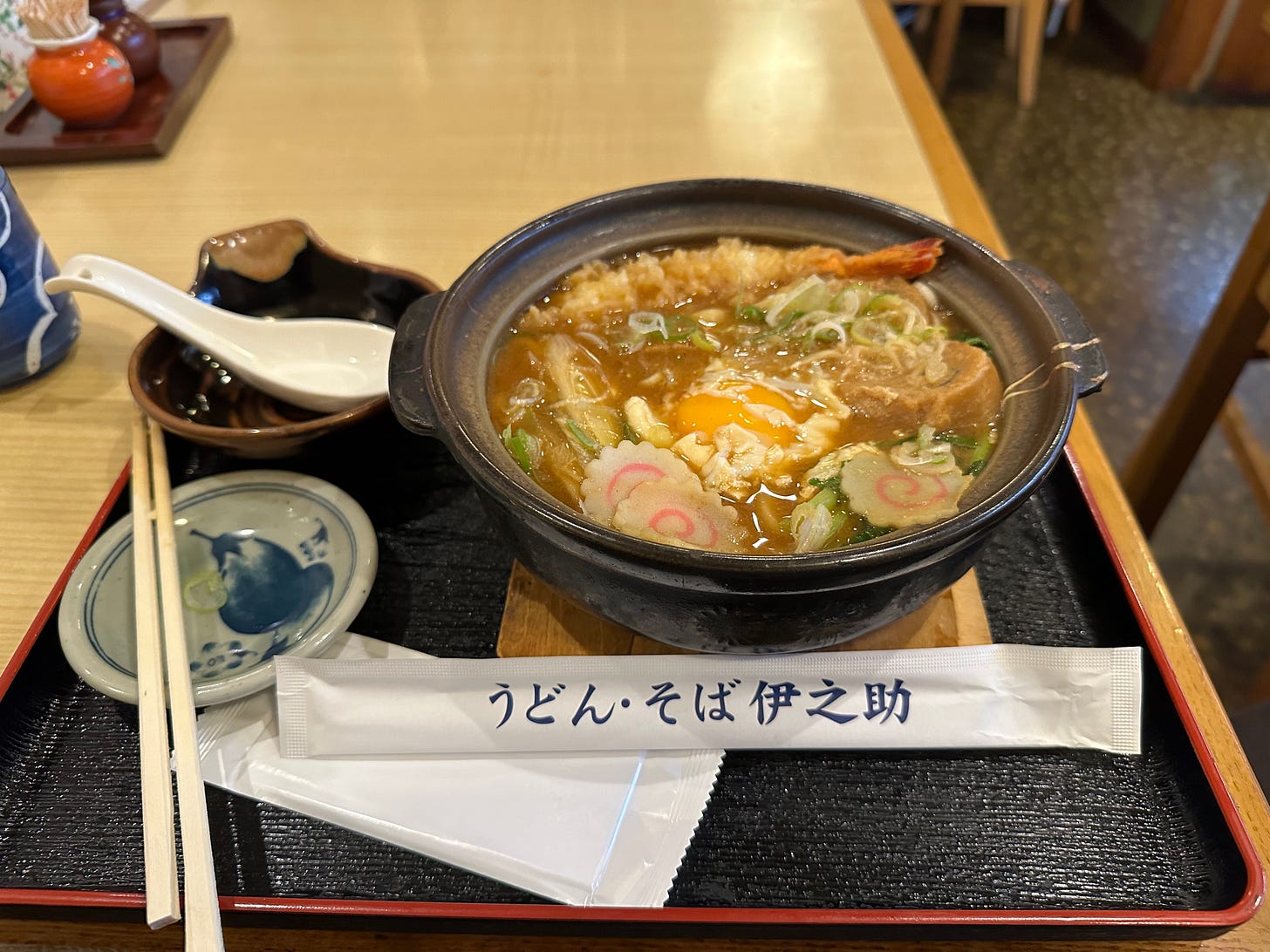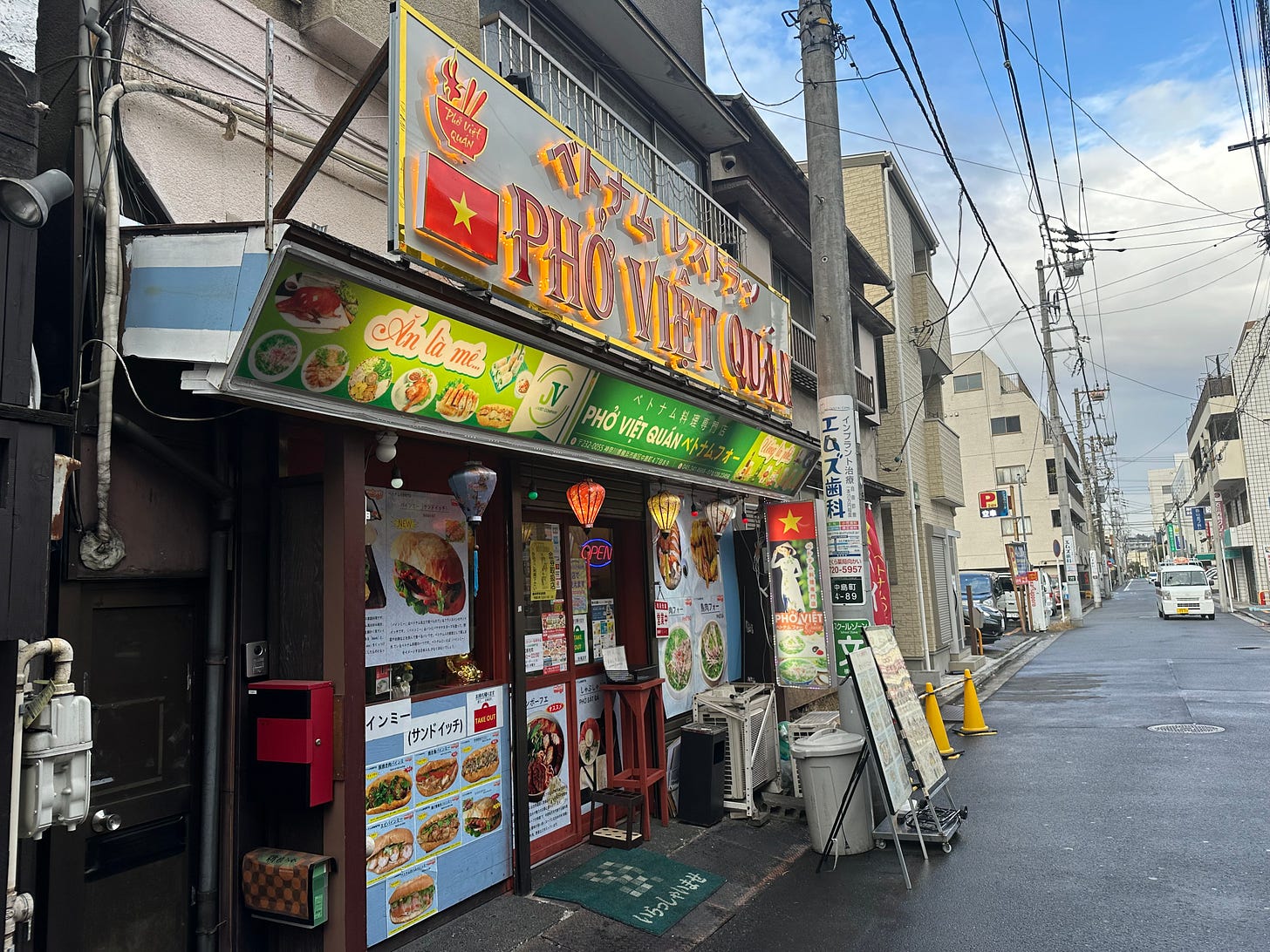Ooka River Promenade near Yokohama. Jan 2, 2024
A peaceful stroll in a winter rain. A photo story.
I wake up and look outside. Gray and cloudy. Rain is coming for sure. If no mud involved,I don’t mind walking in the rain. So, I take a train to Hinodecho station near Yokohama.
I like to visit Hinodecho surroundings for different reasons. There is an outdoor shopping area Isezaki Mall nearby, a very wallet friendly place. If you walk along Ookawa River towards Yokohama (north direction) you will come across vibrant Nogecho, the area full of izakaya bars. You can easily get drunk by just walking through Nogecho alleys full of people seemingly enjoying their unsteady walks.
But today my walk is in the opposite direction, to the south, to cover all the length of Ookawa River Promenade. I like rivers and l like trains. Both are available, because on the right side for a good part of the walk I am frequently greeted by speeding trains of Keikyu Line.
It is strangely quiet and liberatingly not crowded. I guess mostly because of the starting drizzle and a gloomy weather, plus the area is not a major attraction as there are no shops here and a very few eating places.
It is mostly residential.
I start the walk from Asahi bridge near Hinodecho station.
Plenty of clear signs.
In fact, there is a description of nearly every main bridge history also. For example, Koganebashi below was built in 1928 as a part of reconstruction project of Yokohama bridges after the Great Earthquake of 1923. At that time 178 bridges were built, of which 40 are still existing and I will see many of them today.
Another part of the history is that nearby area, Koganecho, after the Americal occupation became a seedy red-light district with over 100 brothels scattered around the suburb as “recently” as 25 years ago. Now it is more known for its art galleries.
Food joint and craft beer pub on my right.
Another cluster of eateries not far from Koganecho station and Kogane Bridge.
Soon I reach red Ootabashi, also built in 1928.
A nod to the artistic nature of the area is the writing on the wall of a kindergarden.
Walking further. Is it really January? I mean the flowers…
I spot jizo (a Buddhist deity) near the Dokei Bridge. It is a memory to monk Dokei who, as the legend goes, built the bridge (not this one) to help people in a hardship and connected both sides of the river. Looks like monks were multi-talented people in Japan. In Christianity priests are busy with words, but legend is a different thing, of course.
Interesting combination not far away: pub next to the gym. Yin and Yang.
One hour after the stroll (and Keikyu Line now going away from the trail) I reach Maita Park.
No parallel bars there for me for chin-ups. OK, tip-tap, tip-tap, I stroll further to Shimizu Bridge to be greeted by a local pigeon. “The sign says no food to the birds, mate, sorry”.
The next bridge is Idogaya bridge. There is a shopping center there, sushi, cafe, etc. Good for a break. But also… sakura.?? I got it, it is the so called fuyuzakura - winter sakura which flowers twice a year, in spring and winter. Actually, this whole promenade is a great place to see sakura blossoms in the spring as most trees along the river are sakuras.
Soon I am approaching Gumyoji temple. On days of the month that end with 8, the Festival of the Eleven-Faced Kannon is held here, and people pray for recovery from illness or their dreams coming true. On days of the month that contain number 3, people who want to find a marriage partner or have children come to the Festival of Daishokangiten, the Japanese name for the Hindu god Ganesha. Plenty of divine support if you need it.
If you climb up towards the temple and beyond, there is a large Gumyoji Park. You can walk down then via Gumyoji Slope (Gumyojizaka) witnessing stalls selling sake, oden and even kebab.
I return back and enter covered Gumyoji shotengai (shopping street). Like this kind of a place, especially during the rain.
I spot the seller of miso pickles and buy a few: daikon, eggplant and cucumber. They are great with rice and miso soup.
Now is the time to chew on something. Udon house Inosuke is very inviting by just looking at the entrance. “My kind of place”, I tell myself and walk in.
Quiet classical music. In fact, when my udon stew with miso (miso nabeyaki udon) arrives, one of the Mozart horn concertos was playing. Food with a classical twist…
Nearby there is also a Vietnamese restaurant. Both are not far from Gumyoji subway station.
I walked a little bit further along the river towards Nakazato bridge and then to Kamiooka station to take train back home. The river walk becomes closed at some points after Gumyoji, so I think the walk can be ended at Gumyoji.
There is another river nearby, Nakamuragawa. I will wait till the next rainy day…
